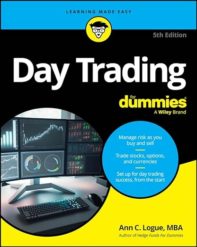
Rencently, someone asked me for thoughts about getting started in investing. That’s such a huge topic! So big! But, hey, I’m going to try.
You may have been thinking about investing and need a place to start. After all, it can get you a better return than a savings account, which helps you reach your financial goals in a shorter amount of time or with less money.
At the most basic level, companies and governments need to raise money. They do that by taking own owners by issuing stock or taking out loans, or bonds. A stock is a small share of a company’s ownership; a bond is a contract by which the company agrees to pay investors interest until maturity, when it will repay the loan. That’s why we have stocks and bonds. Investing is the process of using one person’s extra money to fund the economic activities of someone else. If the economy is growing, then investments should make money.
On a simpler level, investing is a way to send your money out to work for you.
Stocks and bonds have higher long-term average returns than bank savings accounts. They also have more risk. In any one year, your return on a stock or bond investment might be less than what you could get in the bank, which is offset by the fact that in another year, your return will be far greater. By giving you a higher return over the long run than a bank account, investing makes it easier to achieve long-term financial goals. For most Americans, that starts with saving for retirement.
Let’s start with the assumption that you know your current financial position (adding up all the things you own and subtracting everything you owe) and have determined your financial priorities. You know you want to invest. How do you start?
Almost every college covers the same basic material in an introductory finance course. First, everyone would rather spend money now than save it, so we’ll only invest money if we expect to make enough money to make it worthwhile. Second, the more risk an investment has, the greater the long-term average return that it has. Third, these risks can be reduced through diversification.
And then there’s a lot of math used to explain and apply those assumptions. You need the math to pass Introduction to Finance, not to start investing.
The first step is figuring out how long you will be investing your money. You would prefer to retire today and head straight for the airport, but you can’t afford to do that. So you need to invest your money to earn a return. It may be 30 years before you retire, but you can probably swing a great vacation next year. As a result, you can take more risk to get a larger return on the retirement fund. You have more time to wait out a bad market year until the good ones arrive.
Your dream vacation, on the other hand, is closer, so you’ll need to take a lower return for your investment in order to reduce the risk of missing out on the trip.
In the long run, returns are always related to risk. If someone offers you a return that is out of alignment with the amount of risk taken, you can bet one of two things: the offer is a fraud, or the person offering it really has something special – and will charge you fees that are so high that it really wouldn’t matter.
And that gets to the issue of diversification. Different investments have different sources of risk. Some companies do well in a recession, others get killed. If you have lots of different investments, you will have less risk relative to the amount of return that you will receive. In general, stocks are riskier than bonds, and bonds are riskier than real estate. A safe, federally insured bank account has very little return because it has no risk. A portfolio that has a little bit of everything will have a return that is the average of the returns of the items in it. However, it will have less risk than the average risk of the investments. The math is in finance textbooks and frustrates many an undergraduate. You don’t need to know the math as long as you’re willing to trust me on that fact.
The good news is that the easiest way for most individuals to invest comes with built-in diversification to get you started with reduced risk. Mutual funds take money from thousands of investors and use it to invest in a range of stocks and bonds. Each of the investors then receives shares in the total fund. Some mutual funds invest in such specific sectors as Middle Eastern stocks or U.S. government bonds; others look to a wide range of investment opportunities. Mutual funds are purchased through the fund companies, either directly or through a broker. An exchange-traded fund is type of mutual fund that trades on the exchanges like any other stock.
One specific type of mutual fund, popular with individuals and institutions alike, is an index fund. This is invested to match the performance of the S&P 500, the Russell 2000, or other index used to measure the performance of the market. These are popular because they are simple, cheap, and outperform most money managers who try to pick their own investments.
Investors do research to see how much risk and return a given investment has as well as to see if there is a short-run deviation. In theory, the markets always price risk correctly, but in the real world, they are off sometimes.
Now, some people want to spend time on investing. They want to do the work and pick their own investments. It’s like making a cake: you can buy one that’s just as good, or maybe even better, from the bakery, but if you get a lot of pleasure out of baking, then it will be worth it to make it yourself. And you might be able to do better. If that’s you, you’ll need to so more research to get started.
Most people, most of the time, should off their debt and then have a mix of stock index funds, bond index funds, and a place to live. If you don’t know what else to do, buy a stock market index fund from a large mutual fund company like Vanguard, choose the large-cap U.S. stock fund offered in your 401(k) plan, and you will probably be all right. If the market has a bad year, you’ll lose money – but so will most other investors, so you won’t be further behind. When the good years come around, you‘ll have investments in place to benefit.
Beyond that, you can put in an entire lifetime to learn and refine investment strategies. That can be a lot of fun.


